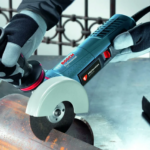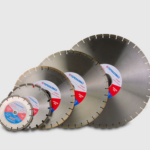Studying the topic “Addition and decomposition of forces”, students in the eighth grade learned about the forces acting on the cutter – the cutting power that presses down on the cutter when its edge rests on the processed part; feed power – she squeezes the cutter in the direction opposite to the longitudinal feed; and radial power repulsive cutter from the processed part.
The greatest force is the cutting force. It depends on the hardness of the processed material, the size of the removed chips, the cutting shape and cooling. You will be interested.
Cutter and processed part were drawn on a cool board. Expressing the material, the teacher confirmed his explanations by drawings (Fig. 9, 10).
The conversation, of course, went about the high -speed and power processing of metals.
Students heard a lot and read about the power cutting of metals proposed by the turner of the Tel Plant Vasily Alexandrovich Kolesov. It is understandable that they are interested in a new method of metal processing and they ask a lot of questions, which, of course, should first of all be a physics teacher.
The second part of the lesson (15-20 minutes) takes place in the work room at the lathe. Here students consider the cutter and caliper, study the effect of various forces. Show power cutting
on our lathe is impossible. You can only explain to the eighth graders that with power cutting, the incidence of the cutter increases from 0.1 to 2 – 4.5 mm for each turnover of the part. Thus, in. A. Kolesov significantly increased labor productivity. But for this, the innovator had to slightly change the geometry of the cutter.
Students see a specific example of a creative attitude to work. For Soviet workers, labor is not only a source of existence, but also a source of creative inspiration.
When repeated in the seventh grade or study in the sixth grade of the “friction” topic, a wooden block is placed on the table. It is brought into a slow uniform straightforward movement. The teacher explains that the force supporting the uniform movement of the body is measured using a dynamometer. This force goes to overcome friction, which interferes with the movement.
No matter how smoothly polished any surface, still there are protrusions and roughness on it, they interfere; movement. In the absence of friction, the body would move evenly and straight.
A load is placed on a wooden block. And again the friction force is measured. This time she became more.
Students note that the force that removes the body from a state of rest is always more than the power that supports the uniform movement of the same body.
If you put a weight of 5 kg on a wooden platform and pull it along the table, the dynamometer will show a rather large friction force. The rinks are placed under the site, and the friction force is significantly reduced.
The teacher says that in the first case, when one body slides along the surface of the other, friction is called the friction of the sliding, and in the second, when it rolls, – the friction of rolling.
The piston slides inside the cylinder of the steam machine or internal combustion engine. Rolling wagons along railway rails. Wherever it is necessary to reduce friction, there the slip friction is replaced.
The lesson is transferred to the workshop, and the teacher confirms his thought with specific examples. He says that thanks to the friction on the bar you can sharpen any tool; But the tool and the bar wear out, and this is the harmful value of friction.
To transmit movement (from the tractor to a thresher, from an electric engine to machines, to a sewing machine), the so -called gear rates are often used. The turning and drilling machines have such transmitting belts (students observe the transfer of movement using drive belts). So that the drive belt does not slide along the pulley and friction is larger, the belt is sprinkled with chilled rosin.
The details of the machines are made very smooth (they also see this in the workshop) and, in addition, lubricate with oil, since: the oil layer reduces friction. Lubricate the moving parts of the clock, turning machines, bearings of cars, filling them with a special alloy – babbit, differing softness and low friction. To reduce sliding friction, rolling bearings (ball or roller) are used, which reduce friction by almost 100 times compared to conventional bearings and require very little oil for lubrication.





